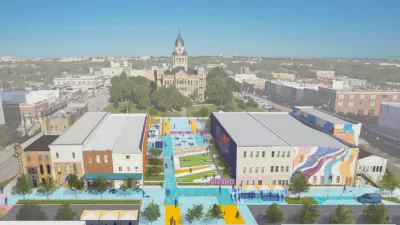This article from Orion looks at an "urban wilderness" in Brooklyn that is being reclaimed and reused by locals.
"Ridgewood Reservoir is a curious new kind of landscape. This is not a park, or a piece of preserved nature, but a previously developed area in the process of reverting to wildness. Urban wildernesses tend to happen by mistake. In a city like New York, where space is at such a premium that former synagogues, sugar factories, and schools have all been reborn as luxury condos, a wilderness can only be the result of inattention."
"Ridgewood Reservoir is the recipient of such benign neglect. Originally built to store water from wells and ponds on Long Island for Brooklyn, the three-basin, 100-million-gallon reservoir came under the control of New York City's Board of Water Supply when the five boroughs united in 1898. It continued to provide Long Island water to Brooklyn throughout the early twentieth century, but development on Long Island was compromising water sources, and fast-growing New York was already looking elsewhere to slake its thirst. The Croton Water System, delivering water from upstate Westchester and Putnam counties, was completed in 1911; the Catskill System was finished in 1927; and the last of the Delaware System's four massive reservoirs, capable of supplying half the current demand, came online in 1965. The first Catskill water-the 'champagne of drinking waters'- came to Brooklyn in 1917, and from then on, as upstate aqueducts and tunnels came into service, Ridgewood Reservoir gradually became obsolete. By 1960, it was demoted to backup, and in 1989, the city decommissioned it and drained two of its three basins. It sat forgotten-by humans anyway-until 2004, when it was signed over to the Department of Parks and Recreation. And that's when things got interesting."
FULL STORY: A Swamp Forest Grows in Brooklyn

Maui's Vacation Rental Debate Turns Ugly
Verbal attacks, misinformation campaigns and fistfights plague a high-stakes debate to convert thousands of vacation rentals into long-term housing.

Planetizen Federal Action Tracker
A weekly monitor of how Trump’s orders and actions are impacting planners and planning in America.

In Urban Planning, AI Prompting Could be the New Design Thinking
Creativity has long been key to great urban design. What if we see AI as our new creative partner?

King County Supportive Housing Program Offers Hope for Unhoused Residents
The county is taking a ‘Housing First’ approach that prioritizes getting people into housing, then offering wraparound supportive services.

Researchers Use AI to Get Clearer Picture of US Housing
Analysts are using artificial intelligence to supercharge their research by allowing them to comb through data faster. Though these AI tools can be error prone, they save time and housing researchers are optimistic about the future.

Making Shared Micromobility More Inclusive
Cities and shared mobility system operators can do more to include people with disabilities in planning and operations, per a new report.
Urban Design for Planners 1: Software Tools
This six-course series explores essential urban design concepts using open source software and equips planners with the tools they need to participate fully in the urban design process.
Planning for Universal Design
Learn the tools for implementing Universal Design in planning regulations.
planning NEXT
Appalachian Highlands Housing Partners
Mpact (founded as Rail~Volution)
City of Camden Redevelopment Agency
City of Astoria
City of Portland
City of Laramie





























